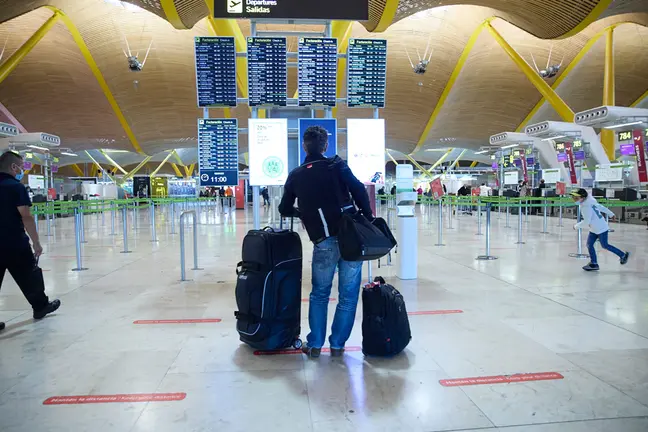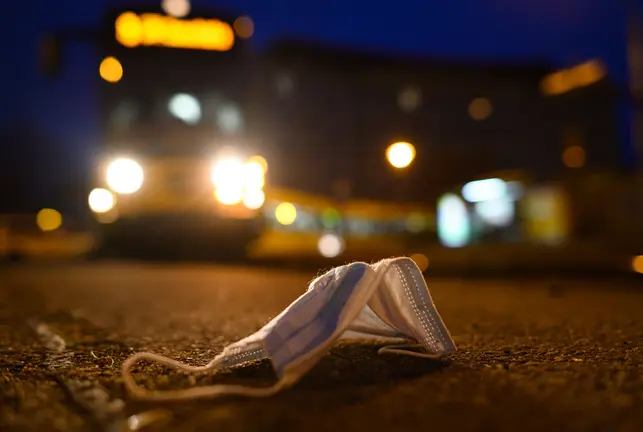First, you feel really tired, you have fever and you are coughing. Following the general recommendation, you call to the hospital and the nurse urges you to stay at home unless your condition worsens. Later, you feel a little short of breath and finally you get an appointment from the hospital.
They test you for influenza by sticking a swab into your throat or far up your nose. And when the result comes, it is negative. You feel relieved, because the science says you have not got coronavirus (koronavirus, in Finnish). However, they tell you to stay home for 15 days as a precaution.
According to Harlan M. Krumholz, a professor of medicine at Yale, “Across the world, people with signs and symptoms of Covid-19 are testing negative and wondering what it means. They are not showing up in the statistics, and they are left in limbo about what to do next.”
Krumholz wrote an article to the New York Times and said, “The problem may be with the test. Current coronavirus tests may have a particularly high rate of missing infections. The good news is that the tests appear to be highly specific: if your test comes back positive, it is almost certain you have the infection.”
A substantial false-negative rate has several important implications. Most importantly, people who have tested negative cannot safely assume they are not carrying the virus.
American Centers for Disease Control and Prevention (CDC) says in its website, "If you test negative for Covid-19, you probably were not infected at the time your specimen was collected. However, that does not mean you will not get sick. It is possible that you were very early in your infection at the time of your specimen collection and that you could test positive later, or you could be exposed later and then develop illness. In other words, a negative test result does not rule out getting sick later."
“Anterior nares (nostril) swabs, nasal mid-turbinate swabs (collected from the middle of the nasal cavity), and oropharyngeal (throat) swabs are ‘acceptable alternatives’," according to CDC. However, no test is 100% accurate.
False negatives
Health authorities in China, in the European Union and other countries, have offered few details on the rates of false-positive and false-negative results on any coronavirus tests.
In February, Wang Chen, a director at the state-run Chinese Academy of Medical Sciences, estimated that the nucleic acid tests used in China were accurate at identifying positive cases of the coronavirus only 30%-50% of the time.
The study of Chinese patients found that tests of sputum and bronchoalveolar lavage fluid (BALF) were more accurate than tests of nasal swabs.
In 15 samples taken 8 to 14 days after symptom has seen, BALF tests detected the virus in all 12 severe cases, although they came up negative for the three patients who had mild pneumonia. The sputum tests were positive 74% to 89% of the time, depending on the severity of the illness and when the samples were taken. Throat swab tests detected the virus in 30% to 61% of the cases.
Also, how the swab was done and the stage of illness the person was in can make a big difference. The interpretation of the results will depend on not just the test, but other external factors, such as laboratory practices and how widely the disease has already spread.
Positive results more trustful
Anthony S. Fauci, the director of the National Institute for Allergy and Infectious Disease, said in a Q&A with JAMA, “If it’s positive … you absolutely can make a [clinical] decision. If it’s negative, you may be early on in the infection and the viral load may be so low you don’t get it.”
Gary Procop, director of molecular microbiology, virology, mycology and parasitology at the Cleveland Clinic talked to Washington Post and said, “Everybody thinks the lab test is always right. When we design tests, they [often] have a 95% sensitivity. That means 5% of the time, you’re wrong. That’s just a structure of testing. You only want to test people you really do believe have the disease, and in this case, people you’re going to act on. If it’s an otherwise healthy, young person, you’re going to say go home and isolate yourself.”
The University of Oxford's Center for Evidence-Based Medicine warns that "the only current Covid-19 specific data comparing [throat swabs] with [nasal swabs] comes from two low quality, non-peer-reviewed studies and should be viewed with caution."
"It is not possible to accurately assess sensitivity from the existing data."













